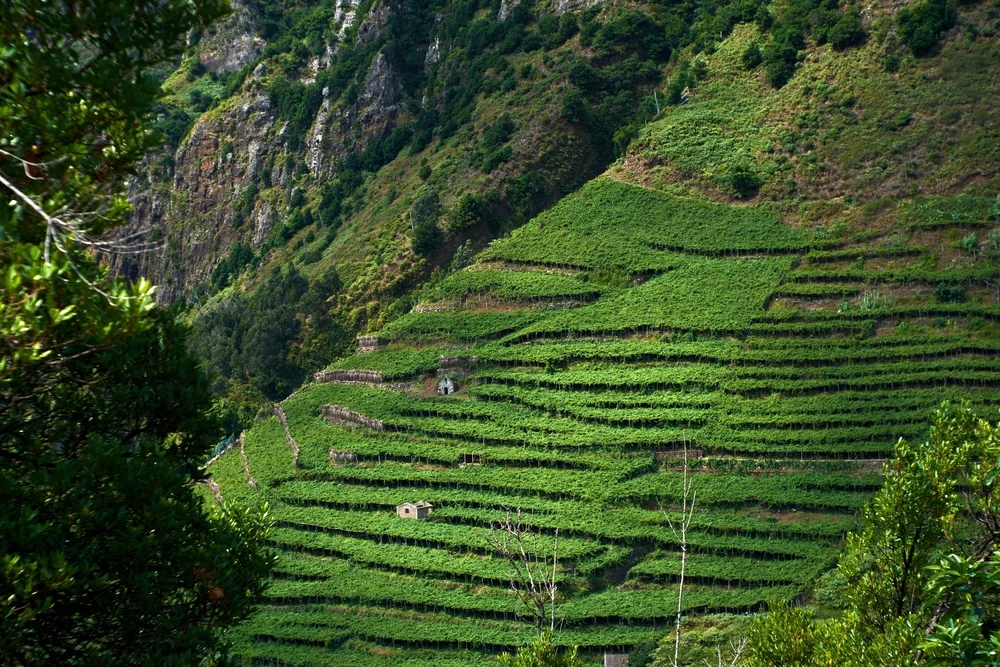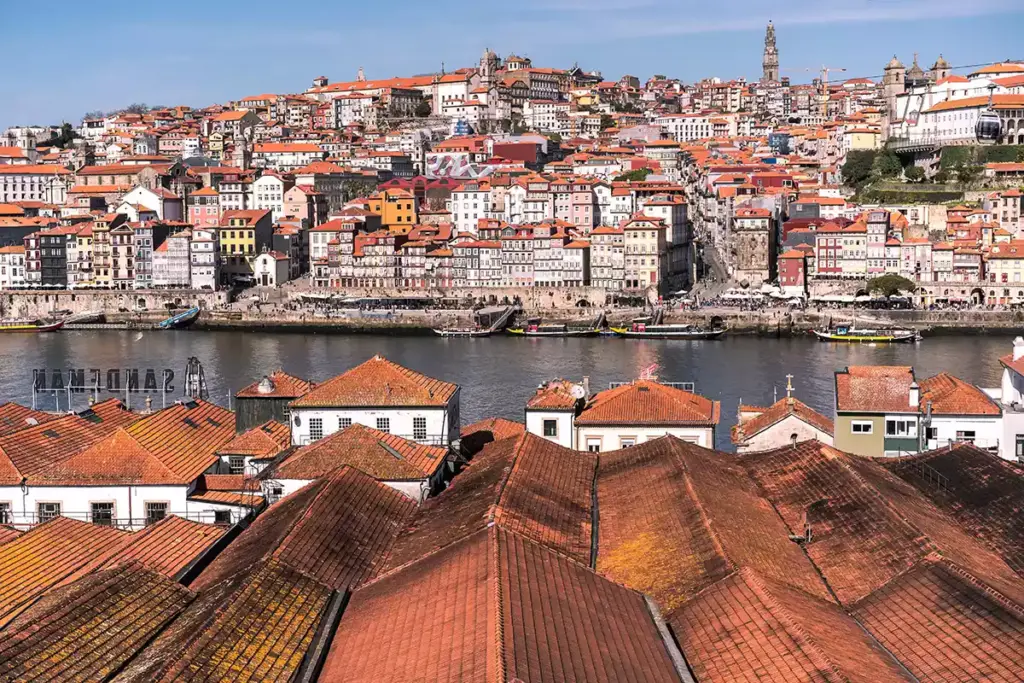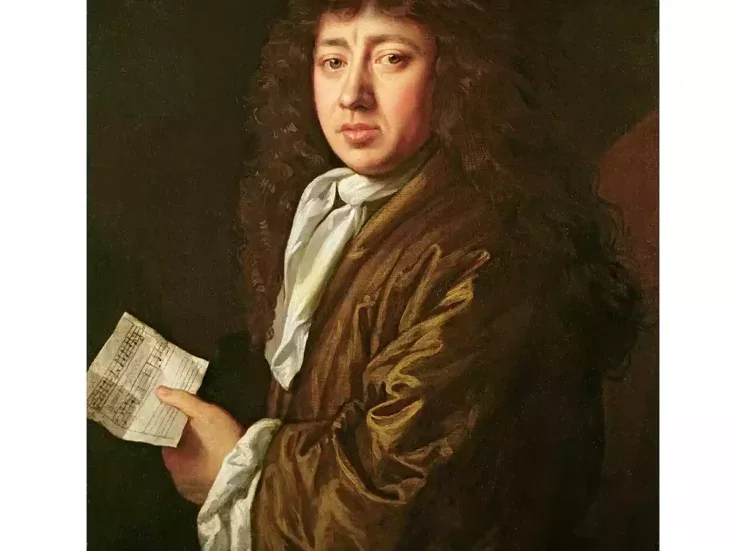
With sales in freefall, fortified wine producers are in the middle of a prolonged existential crisis, says Simon J Woolf. Could the panelists at Austria’s Arlberg Weinberg Symposium offer some some survival tips?
The realization that the fortified-wine category might be on the back foot first came to me in 2004, while studying for my WSET Diploma. Our tutor lamented that we were already too late for Cyprus’s Commandaria and Sicily’s Marsala—both axed from the syllabus years earlier. But we did learn about something that had hitherto been one of my blank spots. It was called Madeira, and it turned out to be delicious.
I have fond memories of that period. My fridge was continually stocked with a selection of classic Madeira styles ready for my “revision.” I fell in love with Sercial and Verdelho 10-year-olds, as the penny dropped that they not only made a wonderful apéritif but could also make a comeback with the cheese and dessert courses at dinner. Like most British wine lovers, I knew Vintage Port was supposed to be the good stuff, but my exposure to other styles was limited, until I started traveling regularly to Portugal a decade later. There, the beauty of wood-aged Ports—age-dated Tawnies and colheitas—unfolded before me, with their complex yet subtle bounty. My taste for dry Sherry was preexisting—something I considered to be incredibly sophisticated. There was one common factor between all of these beverages: Even in 2004, they felt slightly arcane, and drinking them made you feel like the member of an elite club where most of the participants were 90 years old.
But if Port, Sherry, and Madeira’s glory days might already have been behind them in 2004, the situation has worsened since. Madeira has entered a slow decline, with sales in 2023 down 17% compared to 2004 (IVBAM figures). Port wine sales declined by almost 25% between 2006 and 2021 (IVDP figures). Worldwide sales of Sherry saw the most dramatic reduction—of almost 50% between 2004 and 2022 (Consejo Regulador figures)—and the Jerez region has seen its vineyard area reduce by around 70% since the 1970s.
This was the backdrop to a meeting of minds at the Arlberg Weinberg symposium in Lech, Austria, in December 2023, with Daniel Niepoort (who is gradually taking over the family business from his father Dirk) flying the flag for Port, and Ricardo Freitas (Barbeito) representing Madeira. The session was expertly, and at times provocatively, chaired by Amanda Wassmer-Bulgin, wine director of the three-Michelin-starred restaurant Memories in Switzerland.
Dark times for Madeira
Neither Niepoort nor Freitas denied that the world is drinking less fortified wine, but both were eager to paint a picture of quality triumphing over quantity. They were the perfect representatives to make this a convincing argument: Niepoort and Barbeito are among the most innovative and progressive houses in their respective regions.
Barbeito is one of the eight remaining producers on the island of Madeira. It’s a relative newcomer, because the business was created in 1948. The historic names are the Madeira Wine Company (Blandy’s), Justino’s, Henriques & Henriques, d’Oliveiras, and Borges, plus two newcomers—J Faria, which started Madeira production in 1998, and Madeira Vintners (CAF), whose first harvest was 2012. As Freitas put it, “Madeira had a huge black period between the 1940s and 1970s, when it was constantly associated just with cooking wine.” Some would argue that it has never entirely recovered.
The 1980s saw many smaller producers and partadistas (non-exporting Madeira producers) go to the wall. It was also the decade that nearly ran Barbeito into the ground, as Freitas’s mother refocused the company on the production and export of bulk Madeira. That might have seemed like a smart decision in terms of short-term cash flow, but when Freitas took control of the company in 1991, he realized that a great deal of the wine was being sold below the cost of production. He gave Barbeito just a few years to live, unless there were drastic changes. Freitas immediately stopped producing bulk wine and has spent the past few decades successfully transforming his family’s business into a boutique operation. The Instituto do Vinho, do Bordado e do Artesanato da Madeira (IVBAM), which regulates Madeira production and sales, outlawed bulk-wine export altogether in 2002, unless it was first denatured by the addition of salt and herbs. It was a move that cleverly enabled them to remove all of the food-grade Madeira from the main production statistics, in order to tell a more positive story.

However, as Paulo Mendes, who founded Madeira Vintners in 2012, explained to me, that positivity may be somewhat illusory. The biggest category by far in Madeira’s annual production statistics has the name “current”; this designates the three-year-old wines, the youngest that can legally bear the name Madeira. In 2023, from just under 3 million liters total production, 1.7 million sat in this category. Wines sold with this classification are inevitably produced by the cheaper estufagem method, where the wine is gently heated for a few days to mimic the more time-consuming process of canteiro (barrel-aging on the upper floors of warehouses for years), and will be produced almost entirely from Tinta Negra Mole rather than from one of the four “noble” varieties. Here’s the rub: Almost nobody drinks these wines. Most is sold to France or Japan, where it ends up in a sauce.
Add the 616,340 liters of food-grade “modified” Madeira to that figure, and that leaves just 700,000 liters—or around 25% of the island’s production—of anything that could help keep the name Madeira in the hearts and minds of wine lovers. Almost half of that is the 300,000 liters of five-year-old Madeira—hardly the stuff of dreams. The ten-year-old category, arguably the entry point for serious varietal wines, totaled a mere 127,465 liters in 2023. That’s not even 5% of total production. The challenge here is clear: If there is so little of the good stuff, how can Madeira win over a new generation of drinkers?
Freitas has been on a mission to improve quality since he started. He explains how he ceased adding caramel to the wines in 2001, against the will of his mother. It was a practice that was presumably common among other producers, too, but not everyone is as transparent as Freitas. While he notes that the production of three-year-old Madeira is “still important for the farmers [growers],” his ambition is to stop production of this category altogether over the next couple of years. That would put him on par with d’Oliveiras, which has never traded in either bulk or three-year-old Madeira, though in all other respects the houses couldn’t be more different. D’Oliveiras is the most traditional, and it focuses mainly on colheitas and frasqueiras (single-vintage wines).
Amanda Wassmer-Bulgin made a pertinent point during the discussion. “When I talk about Port or Madeira on the floor, I talk about who made it. I don’t talk about the vineyard,” she said. “But shouldn’t we be talking about the terroir?” Her question cut to the crux of one of Madeira’s problems: It is out of step with most premium wine marketing, which focuses heavily on the “story” of single vineyards or parcels, particular soil types, or climates. But Madeira isn’t, in this sense, a terroir wine. It is invariably a blend across vineyards, soil types, and growers. With none of the eight producing houses owning more than 2–3ha (5–7.5 acres) of vines, there is currently no such thing as a “grower-producer Madeira” or even a single-vineyard bottling. Virtually all of Madeira’s singular character and complexity comes from the aging process, not from the raw materials.
If anyone can turn this narrative around, it will be Freitas—who has ambitions to make a single-vineyard Madeira. But the survival of Madeira will need more than just Barbeito. Arguably, it is the entire production model that needs to be shaken up. The structure of eight producers and around 1,600 growers is tightly regulated by IVBAM when it comes to grape prices, the manner of production, and classification. It’s a system that resists change, because the growers have a captive market and a guaranteed high price (between €1.20 and €2.40 per kilogram) for their grapes. Grape quality has not hitherto been a primary focus, as Paulo Mendes again explained: “If you come to Madeira during harvest and look at the state of the grapes being delivered to wineries, you can see the problem.” Rotten grapes and widespread botrytis are typical issues.
Currently, IVBAM’s regulations state that any potential new Madeira house has to come to the table with 75,000 liters of preexisting stocks before it is legally able to trade. This makes it well-nigh impossible for a newcomer to enter the market. When he first attempted to set up Madeira Vintners, Mendes tried to persuade the existing houses to sell him some stock—and the door was figuratively slammed in his face. He got lucky in 2012, an exceptional vintage that produced such an oversupply of grapes that he was able to take advantage of the situation. Freitas and Mendes had a partnership during the first few years of Madeira Vintners, but in 2023 Freitas doesn’t sound especially welcoming to new faces. “If someone new comes, it will be extremely difficult to face the competition from those who are already settled,” he said.
Fortified wine: Keep it local
If Madeira’s very infrastructure resists the kind of innovation that might help save it, there is a far more fundamental issue with the fortified-wine category as a whole. The fashion for drinking high-ABV, concentrated alcoholic beverages—at least in polite society—has fallen off a cliff. Few of us still enjoy the kind of leisurely existence where lunch could be extended to several hours or finish with a glass or two of Madeira or Port. The growth in the wellness sector and the increasing belligerence of the anti-alcohol lobby both present significant challenges for fortified wines—which by their very nature will always be troublesome to squeeze into responsible-drinking or low-alcohol tropes. Why, then, is the spirits and cocktails market so strong? In contrast to most fortified wines, spirits are sold on brand. And those brands are huge, global affairs, not delimited by production regions or arcane classifications. In that sense, the fortified-wine category is caught between two stools—neither artisanal or terroir-focused enough to appeal to today’s wine geek, nor accessible enough for a mass audience.
Sherry is arguably an edge case. Unlike many other fortified styles, it has a strong domestic market (about 35% of total annual sales), which strengthened significantly in the 1980s, and it has remained stable over the past two decades. This sits in contrast to Madeira and Port, neither of which is typically consumed by locals or the Portuguese in general. Furthermore, the two lightest and freshest Sherry styles—Fino and Manzanilla—are classically bone-dry and ideally suited to an apéritif. Here, alcohol levels are barely above those of unfortified wines—Fino and Manzanilla have a minimum alcohol requirement of just 15% ABV.
The Consejo Regulador introduced a number of far-sighted new rules in 2021, which appear to show that it is listening to changing customer demands. Fino and Manzanilla can now be produced without fortification (in other words, provided that they achieve the minimum 15% ABV through fermentation, which is quite possible in Jerez’s ever warmer climate), and a number of historic grape varieties has been added to the register. Previously, DO Sherries could be made only from Palomino Fino, Moscatel, or Pedro Ximénez (the latter two almost exclusively seen only in sweet styles). Coupled with more permissive rules about the sourcing of grapes for DO Jerez, the possibilities for true terroir Sherries suddenly look bright. The catch, of course, is that much of the most innovative work in the region is leading away from fortification. Producers such as Bodegas Luis Pérez, Raúl Moreno, or Muchada-Leclapart have all demonstrated in recent years that the combination of old vines, sensitive winemaking, and the influence of flor is enough to create outstanding still (unfortified) wines that show the particularities of the region.
Some of Jerez’s more artisanal houses, such as Bodegas Tradición, also paint a positive picture of premium sales increasing even as volume decreases. When I challenged managing director David Blyth about the Consejo’s long-term reported downturn, he responded, “Our sales have been gradually growing among wine aficionados, new wine enthusiasts (younger than we expected 20 years ago), fine-dining restaurants, and in general, a very demanding public.” Bodegas Tradición focuses on producing VOS and VORS wines (aged over 20 and 30 years respectively). This is a very similar refrain to that given by Ricardo Freitas—premiumization has become more important than volume.
Any Port in a storm
If there is any correlation between breathtaking scenery and wines with terroir expression, the Douro Valley would rank at the top, with its extraordinary terracing and a landscape that looks like it was constructed by giants. However, Port wine production in the Douro historically clung to many of the same restrictions that have arguably boxed in Madeira. The Douro is one of the most tightly regulated wine regions on Earth, and before Portugal joined the EU in 1986, the industry operated under a similar monopolistic system. The major Port wine houses dominated production, buying grapes from around 6,000 different growers in the valley. Those growers were effectively prevented from setting up their own independent production by a rule that stated that Port wine could only be exported if it went via a registered warehouse in Vila Nova de Gaia. Such warehouses were—and still are—almost all in the hands of long-established houses.

A lot has changed since 1986, and the export rule had to be relaxed to fit with European Union anti-monopoly regulations. There are now almost 100 smaller independent producers in the valley, in addition to major players such as The Fladgate Partnership, Symington Family Estates, or Real Compania Velha. It’s still the big guys that dominate, though, with only about 2% of annual Port wine production coming from grower producers. But large though the established houses might be, their Port sales are generally decreasing.
Daniel Niepoort confirmed that his family’s business now produces significantly less Port than it did 30 years ago, mirroring the decline in sales seen in the IVDP’s statistics. He also notes, however, that in the past Niepoort would purchase finished wine, as well as grapes. Now it only buys grapes. Overall annual production of Port has dropped from around 100,000 pipes (a pipe being a 600-liter barrel commonly used for aging Port), down to 85,000 pipes in the past few decades.
Port has its own issue above and beyond being a fortified wine with a typical ABV of 19–20%. It almost always has notable sweetness, with 100g or more of residual sugar per liter, something that seems more and more out of step with fashion—at least, fashion among most wine drinkers. Only white Port is commonly made in a drier style, and then only for the purpose of making mixed drinks such as white Port and tonic. The industry has been slow to recognize this changing consumer taste as an issue, though the independent house Quinta do Infantado has always made significantly drier styles with residual sugar of around 60g/l. It’s important to note that sweetness in Port is a stylistic choice and not purely logistical. The point when fermentation is arrested with brandy can vary, depending on how much residual sugar is desired.
Niepoort concurs that “Port isn’t a very easy drink to sell today. It has 20% alcohol and way too much sugar—but it tastes delicious!” However, he has introduced wines such as Trudy Ruby, a drier, lighter style of ruby Port, as a response. In general, however, Niepoort’s passion is for colheita Ports —Tawnies from a single harvest. “It doesn’t make sense to me that Vintage Port always sells for a higher price,” he says. To ensure that mature colheitas are accorded their true value, the Niepoort policy is to hold back from selling too much too quickly. Niepoort laughs that sometimes he has to restrain his sales team. “Sometimes they sell off the entire stock of a 20- or 30-year old Tawny, and I say, ‘Hey, calma—it will take 20 years to make another one!’” Overall, when it comes to Port, he feels that “people are drinking less but drinking more wisely.”
The elephant in the room is the runaway success of still wines in the Douro Valley. In commercial terms, this category came from nowhere in the 1990s, to the current position where still wines represent almost half of the valley’s entire production. So, even if Niepoort and the other major Port wine houses have reduced sales in their fortified categories, the still wines compensate. This sits in stark contrast to Madeira, where the still-wine category remains little more than a curiosity item, with minute production that is mostly sold on the island itself.
Many major Port wine producers have come to rely on still-wine production as an outlet for excess grapes. Port wine production is strictly controlled and limited by the Instituto dos Vinhos do Douro e do Porto (IVDP) via the benefício, a license that stipulates how much Port can be produced each year from each specific vineyard. Despite unofficial and theoretically illegal horse-trading in benefícios, most Port houses end up with a surplus of grapes each year, due to the IVDP’s cautious approach, which is designed to avoid the market being flooded with bargain-basement Port. The strategy is less successful when it comes to still wines, which are frequently sold at below the cost of production. But that’s another story.
What is clear is that the Port producers have a safety net, even assuming that worldwide Port consumption continues to decline slowly, as at present. Premiumization is a theme here, too. Niepoort excels in this category, with the super-premium offering of its garrafeira Ports (aged in demi-johns), which have spanned 1863, to the current release, 1987. Typically priced around €500 per 75cl bottle on release, these precious jewels often change hands for four-figure sums on the secondary market. The “Party Port” is a little more accessible but still definitely premium. The initial release was a Tawny Port from the 1950s, which was bottled in magnums in the 1970s. It sells for a little over €100 per magnum.
The Sherry region’s resilience is built on similar foundations, with houses such as Bodegas Tradición leveraging long aging and deep stocks to premiumize, or others repositioning themselves as producers of unfortified dry wines. Only Madeira sits alone in this equation—there really is no backup plan if world demand for the core product continues to fall. The still-wine category has largely failed to deliver after more than two decades. Madeira’s corporate structure is set to become even more consolidated. As part of a deal with its majority shareholder, French conglomerate La Martiniquaise, when Henriques & Henriques’s current CEO Humberto Jardim dies, ownership of H&H automatically passes to La Martiniquaise, which already owns Justino’s, the largest-volume producer on the island. This would then leave two major groups (Justino’s and the Madeira Wine Company) and five small independents—a fragile structure on which to base the island’s future. It remains to be seen whether Ricardo Freitas’s drive and innovation alone will be enough to keep the category alive.
We’ve been here before, with the almost complete disappearance of Carcavelhos, another of Portugal’s erstwhile fortified gems. The region, which today is effectively a suburb of Lisbon, was almost completely subsumed by property development by the 1980s. At the time of writing, the city council has invested in a few hectares of vineyards to try to keep the category alive. Marsala has fared slightly better but is now almost universally known as a cooking wine. Commandaria is made in such minute quantities these days that it barely qualifies as commercial. I certainly don’t blame the Wine & Spirit Education Trust for removing these historical curiosities from their syllabus, but I would definitely shed a tear if wine students in the future no longer learned about the singular beauty of Port, Sherry, or Madeira.






